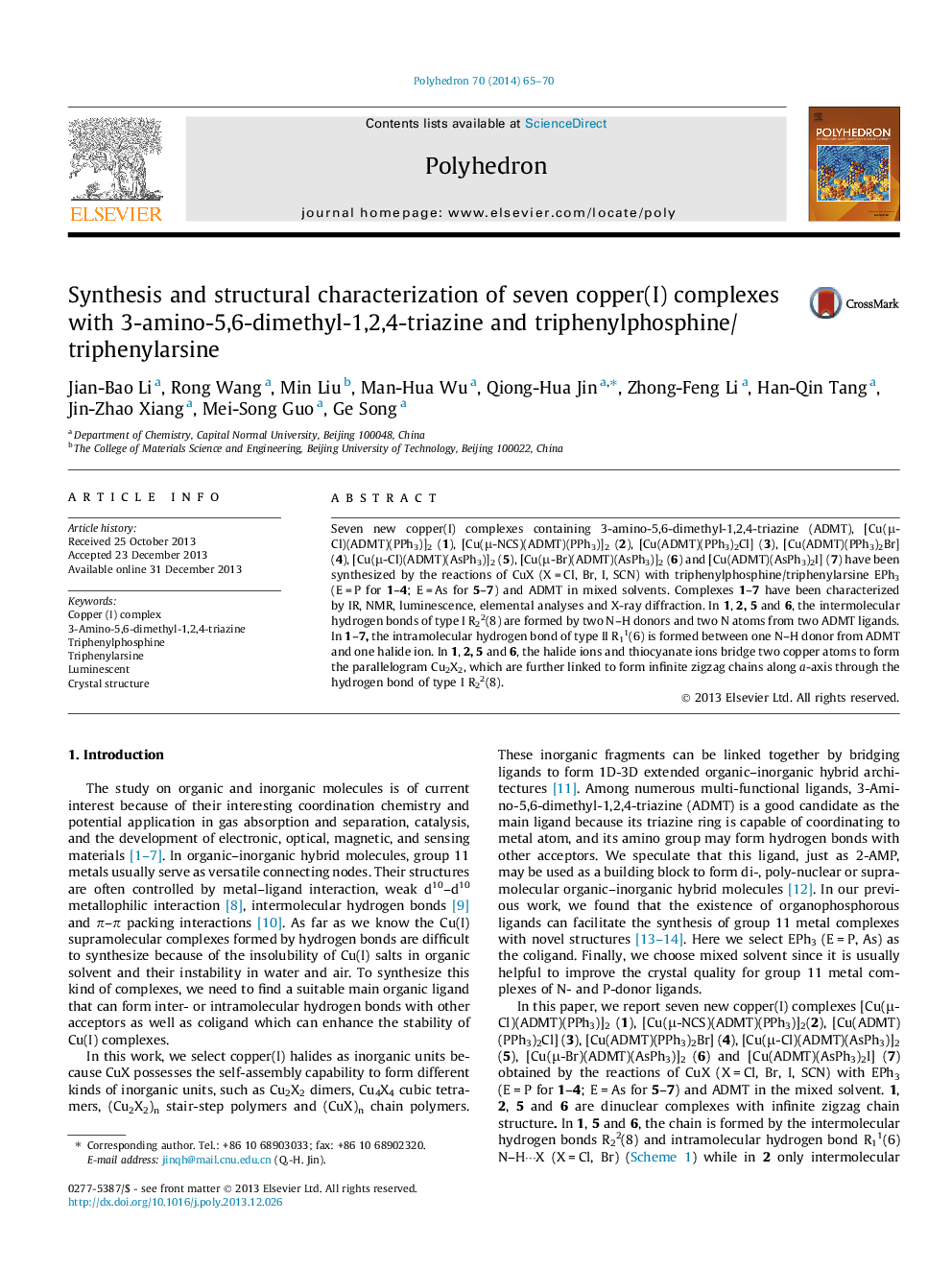| Article ID | Journal | Published Year | Pages | File Type |
|---|---|---|---|---|
| 1336495 | Polyhedron | 2014 | 6 Pages |
Seven new copper(I) complexes containing 3-amino-5,6-dimethyl-1,2,4-triazine (ADMT), [Cu(μ-Cl)(ADMT)(PPh3)]2 (1), [Cu(μ-NCS)(ADMT)(PPh3)]2 (2), [Cu(ADMT)(PPh3)2Cl] (3), [Cu(ADMT)(PPh3)2Br] (4), [Cu(μ-Cl)(ADMT)(AsPh3)]2 (5), [Cu(μ-Br)(ADMT)(AsPh3)]2 (6) and [Cu(ADMT)(AsPh3)2I] (7) have been synthesized by the reactions of CuX (X = Cl, Br, I, SCN) with triphenylphosphine/triphenylarsine EPh3 (E = P for 1–4; E = As for 5–7) and ADMT in mixed solvents. Complexes 1–7 have been characterized by IR, NMR, luminescence, elemental analyses and X-ray diffraction. In 1, 2, 5 and 6, the intermolecular hydrogen bonds of type I R22(8) are formed by two N–H donors and two N atoms from two ADMT ligands. In 1–7, the intramolecular hydrogen bond of type II R11(6) is formed between one N–H donor from ADMT and one halide ion. In 1, 2, 5 and 6, the halide ions and thiocyanate ions bridge two copper atoms to form the parallelogram Cu2X2, which are further linked to form infinite zigzag chains along a-axis through the hydrogen bond of type I R22(8).
Graphical abstractSeven copper(I) complexes have been synthesized by the reactions of CuX (X = Cl, Br, I, SCN) with EPh3 (E = P for 1–4; E = As for 5–7) and 3-amino-5,6-dimethyl -1,2,4-triazine in mixed solvent. Complexes 1–7 have been characterized by IR, NMR, luminescence, elemental analyses and X-ray diffraction.Figure optionsDownload full-size imageDownload as PowerPoint slide
